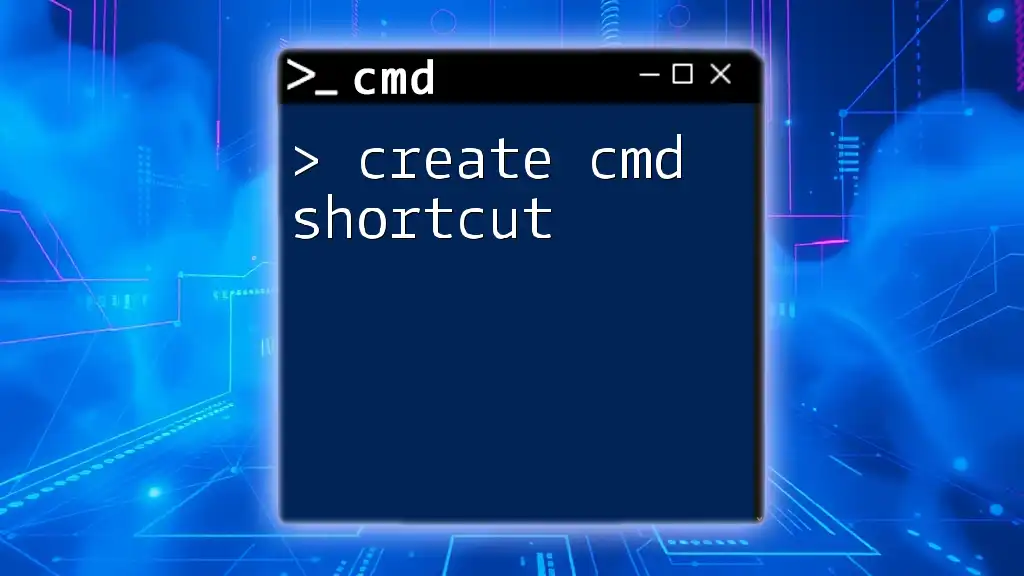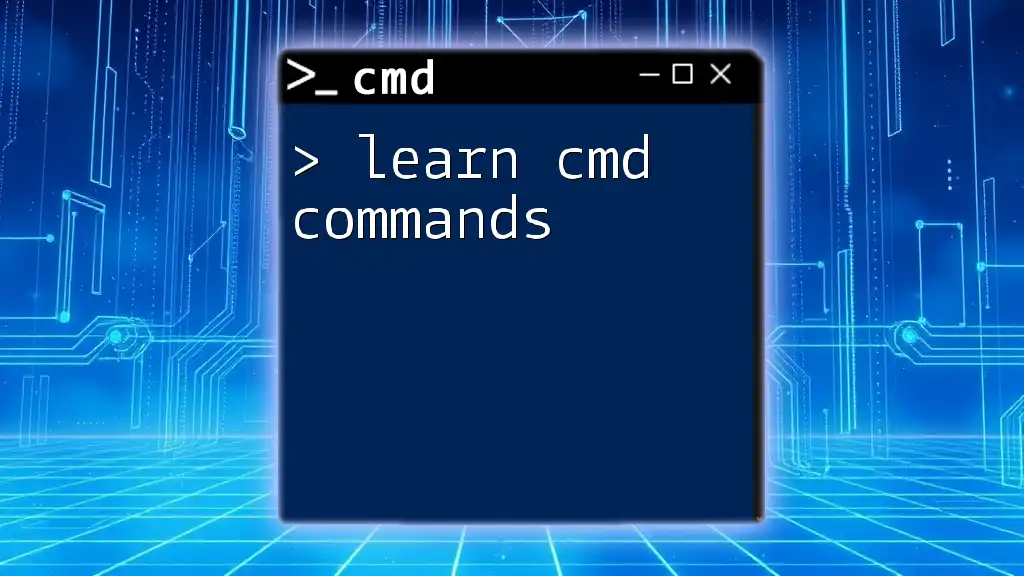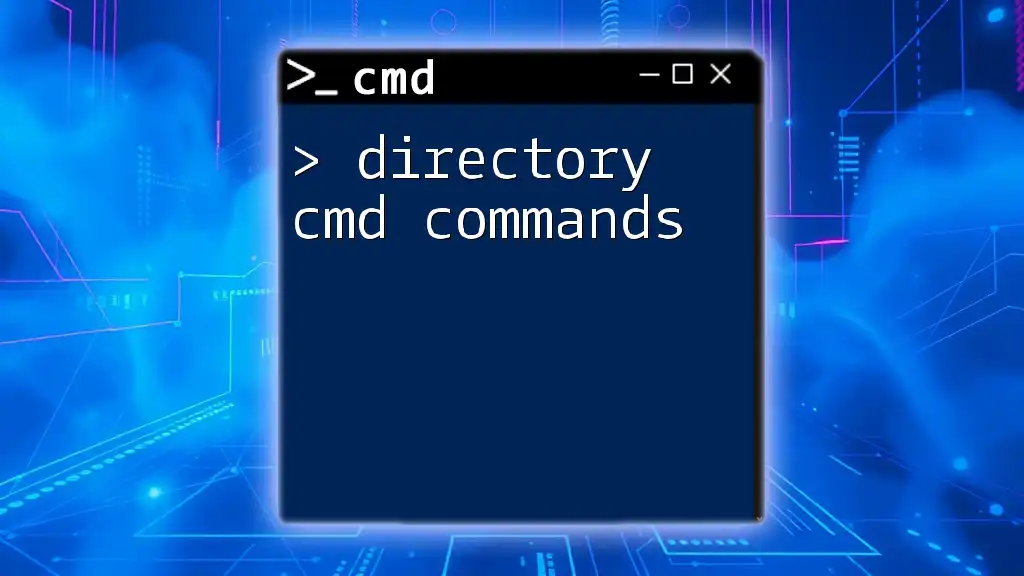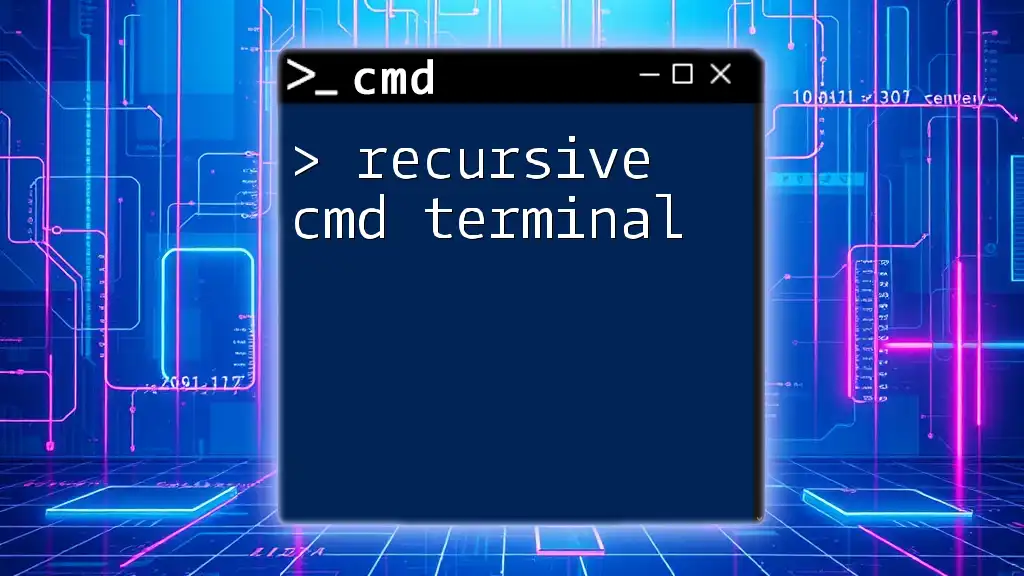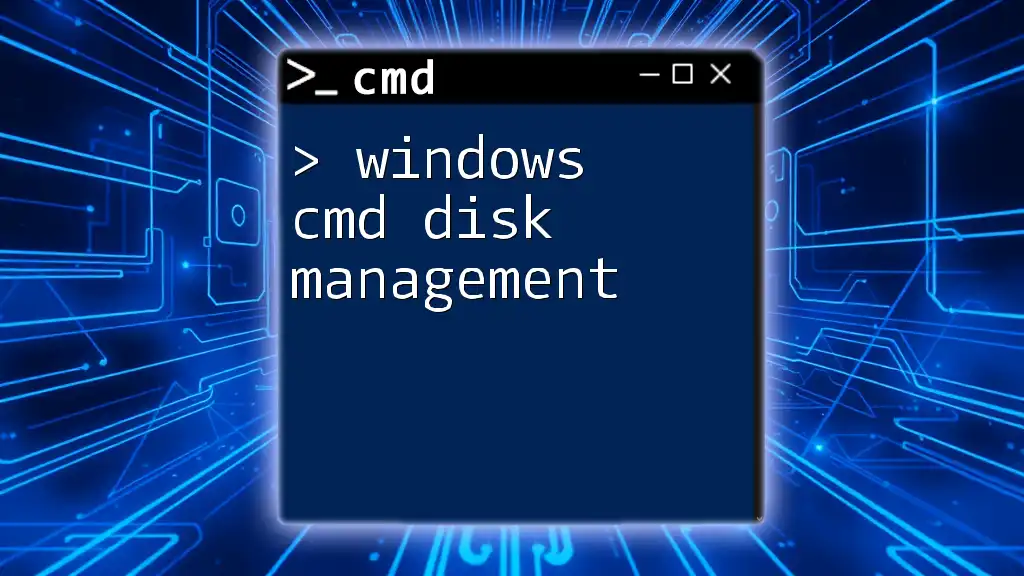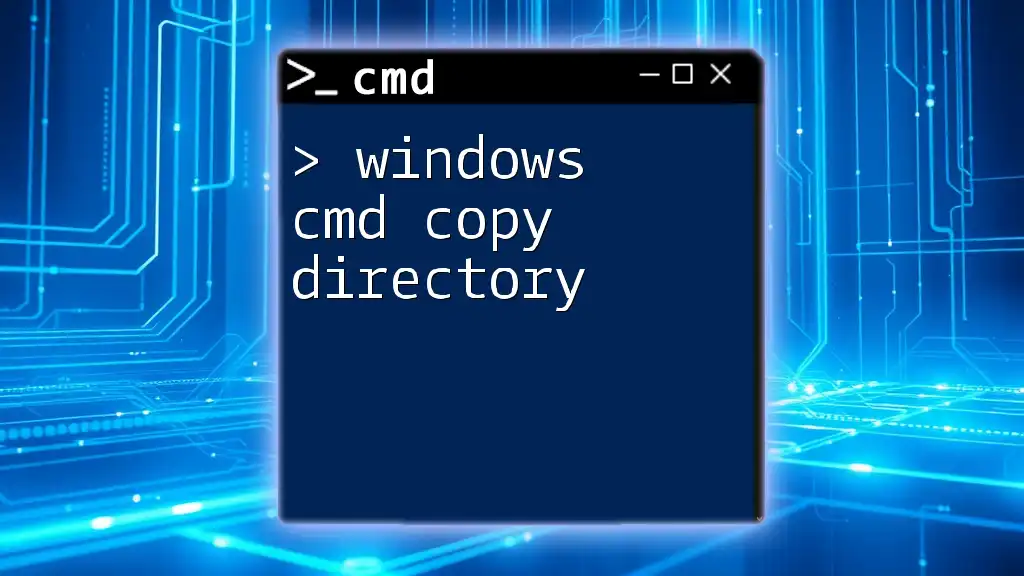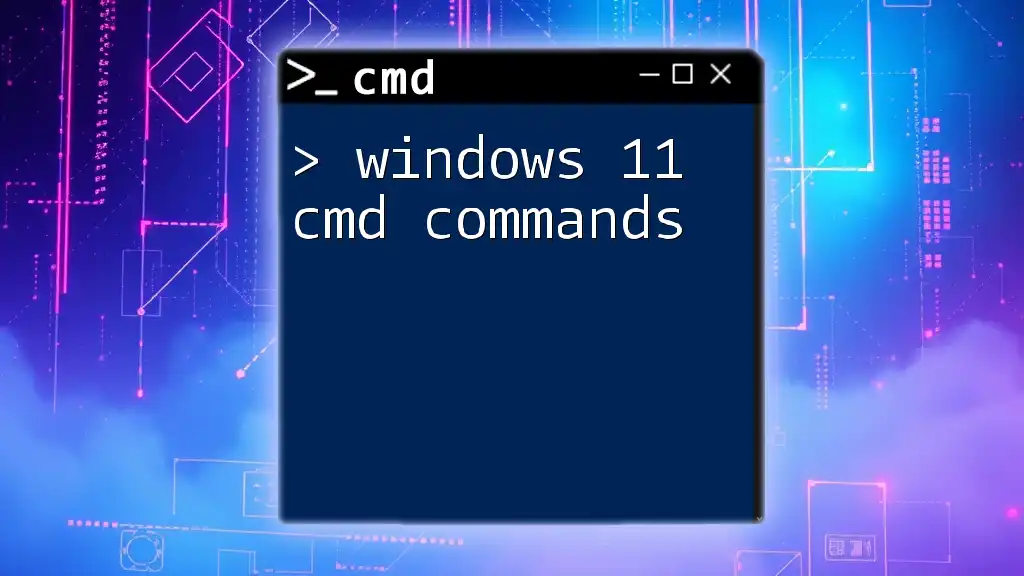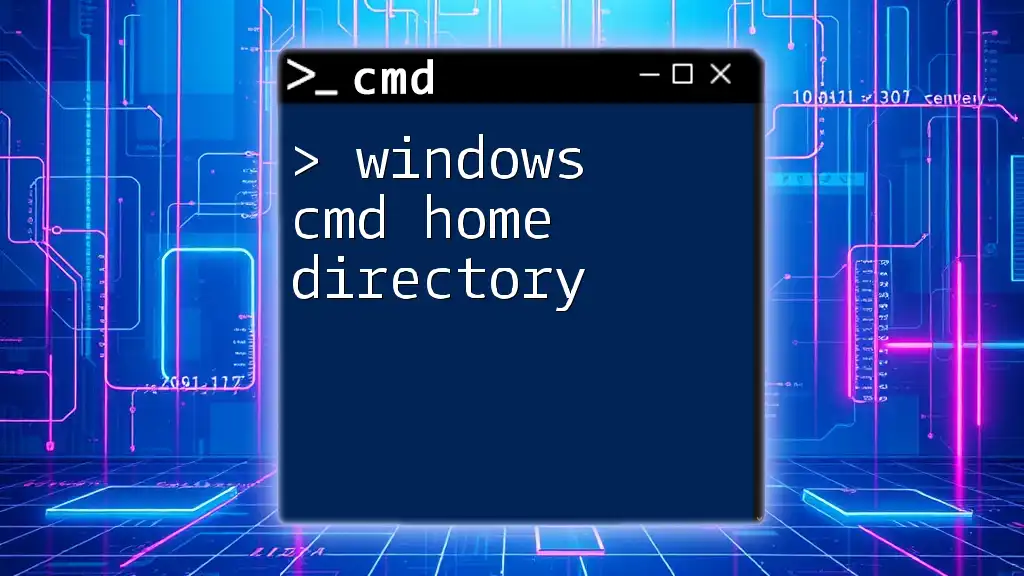Unlock the power of your Windows command line with these awesome CMD commands that streamline tasks and enhance productivity.
Here's a simple yet effective command to check your IP configuration:
ipconfig
What Are CMD Commands?
CMD commands, or Command Prompt commands, serve as the backbone of the Windows operating system, allowing users to interact with the OS via a text-based interface. Unlike graphical user interfaces (GUIs), which present information visually, CMD provides a space where commands can be input directly to execute specific tasks.
Understanding CMD is crucial because it can help users perform tasks more efficiently and troubleshoot system issues that might not be easily accessible through normal Windows functions. Additionally, knowledge of CMD enhances problem-solving skills and opens doors to automation through scripting.
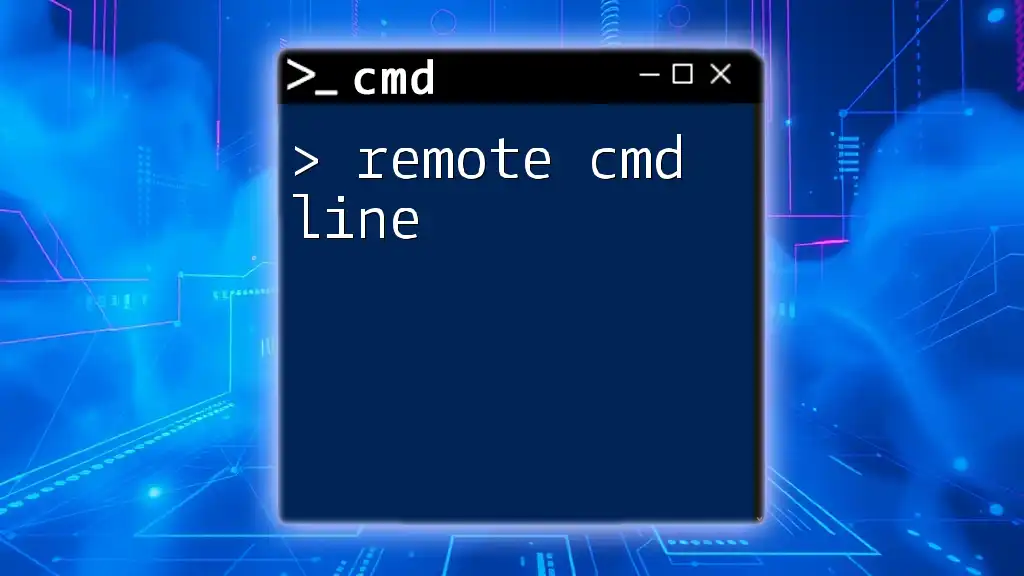
Essential CMD Commands
Navigating the Filesystem
One of the fundamental tasks in CMD is navigating through the file system. The dir command is instrumental in listing files and directories at your current location.
For example, to view the contents of your user directory, you can enter:
dir C:\Users\YourName
By adding options like `/w`, you can view the list in a wide format, and `/s` allows you to include subdirectories, making it easier to manage your files.
File and Directory Management
cd: Changing Directories
The cd (change directory) command allows you to move between directories effortlessly. For instance, to change to the "Documents" folder, simply type:
cd Documents
If you need to return to the parent directory quickly, you can use `cd ..`, which saves time when navigating.
mkdir: Creating New Directories
Creating directories is just as important. You can create a new folder named "Projects" in the current directory using:
mkdir Projects
Additionally, you can create nested directories in one command by utilizing the `/p` switch:
mkdir parentFolder\childFolder
rmdir and del: Removing Directories and Files
When it comes to removing directories, rmdir is your friend. To delete a directory named "myFolder" along with its contents, you would type:
rmdir /S myFolder
The `/S` option ensures that all files and subdirectories are removed. For deleting individual files, the del command is used. For instance:
del myFile.txt
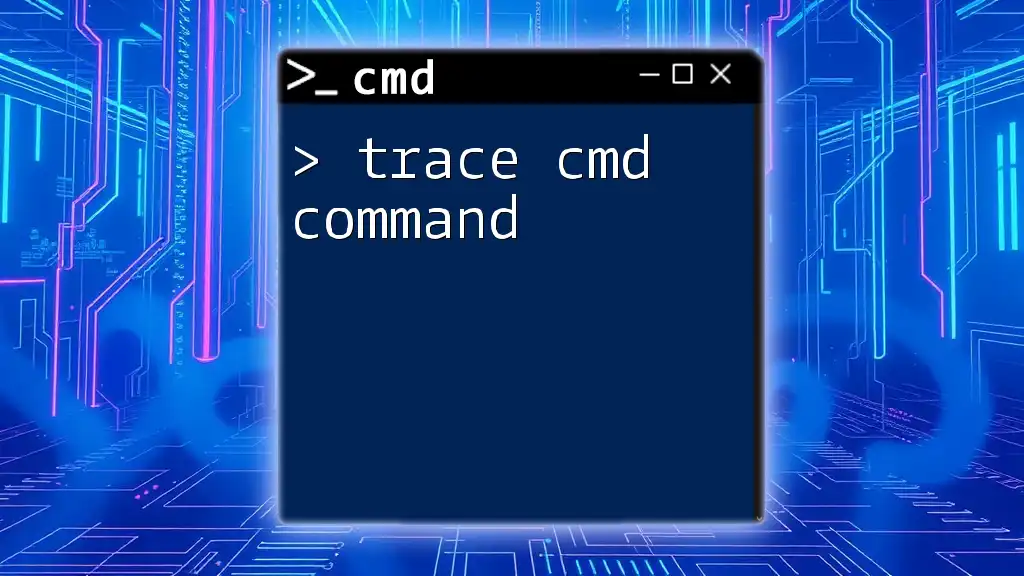
Awesome CMD Commands to Enhance Productivity
Network Commands
ping: Checking Network Connectivity
To ensure your internet connectivity is stable, the ping command is invaluable. To ping Google's server, enter:
ping google.com
The output will show whether the packets were successfully sent and returned, along with the time taken for each round trip.
ipconfig: Viewing Network Configuration
The ipconfig command is essential for troubleshooting network issues. For a detailed view of your network configuration, use:
ipconfig /all
This command will display your IP address, subnet mask, default gateway, and DNS servers, providing essential information for resolving connectivity problems.
System Commands
tasklist: Listing Running Processes
If you're looking to monitor what applications or processes are running on your system, the tasklist command is very useful:
tasklist
This command outputs a complete list of currently running processes and their associated details, helping you identify any resource-heavy applications.
systeminfo: Getting System Details
To gather comprehensive information about your computer’s configuration, type:
systeminfo
It provides vital system details, including OS version, installation date, and available RAM, all in one place.
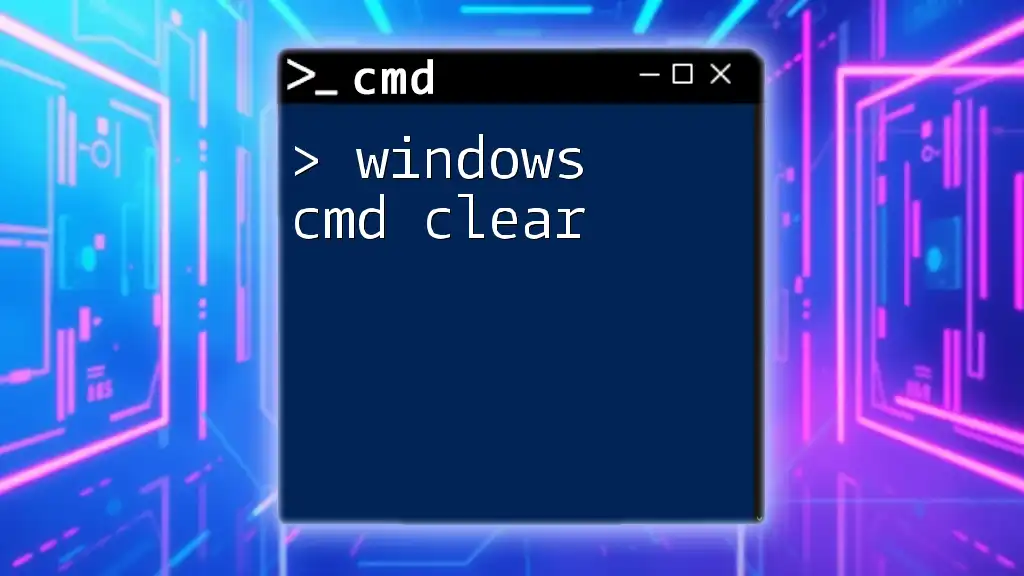
Cool Commands for System Troubleshooting
Checking System Health
chkdsk: Checking Disk Integrity
To maintain the health of your partitions, you should regularly use the chkdsk command. To check the integrity of your C: drive, you would enter:
chkdsk C:
The command scans the disk and reports on its condition, helping you identify and fix issues like bad sectors or file system problems.
sfc /scannow: Scanning for System File Corruption
To ensure that your system files are intact and undamaged, the sfc (System File Checker) command is indispensable. Run it with:
sfc /scannow
This command scans for corrupted or missing system files and attempts to repair them automatically, essential for maintaining system stability.
Advanced Troubleshooting Commands
netstat: Viewing Network Connections
If you want to check the current network connections and listening ports, the netstat command will provide that information:
netstat -ano
This command displays active connections with respective process IDs, which you can further investigate to identify possibly problematic applications.
tracert: Tracing the Route to a Network Host
To diagnose network delays, the tracert command helps you trace the path packets take to their destination. For instance:
tracert google.com
This command provides a hop-by-hop breakdown, making it easier to identify where delays occur in the network path.
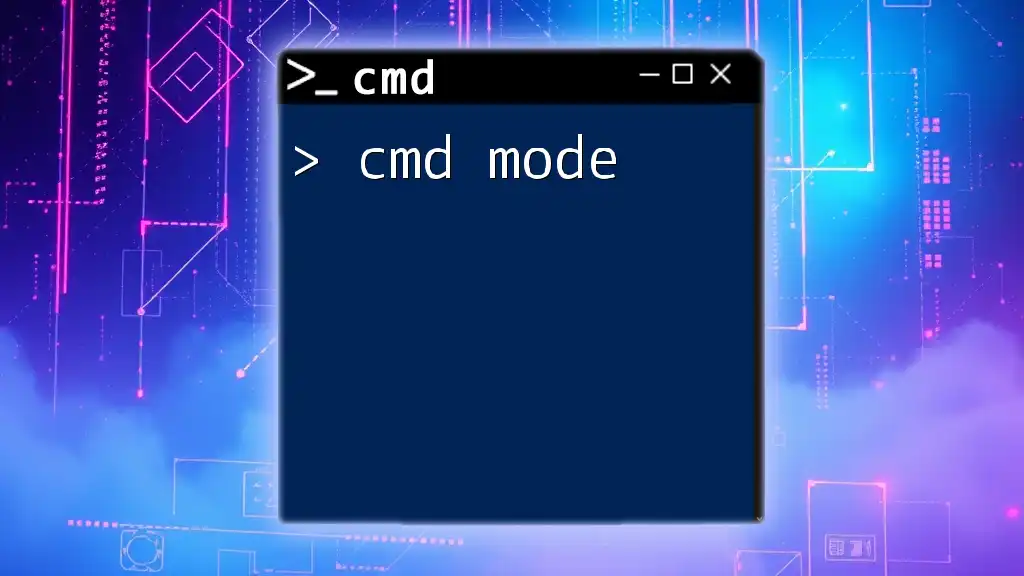
Interesting Commands in CMD for Fun
Game Commands
telnet towel.blinkenlights.nl: Viewing ASCII Star Wars
For a fun diversion, if you have Telnet enabled, you can watch an ASCII version of Star Wars:
telnet towel.blinkenlights.nl
This whimsical command outputs a nostalgic text version of the film, showcasing the quirky side of CMD.
color: Changing CMD Window Colors
You can customize your Command Prompt experience with the color command. For example, to change the background to black and the text to green, type:
color 0A
The numbers and letters correspond to different colors, allowing for a personalized command line aesthetic.
Create Fun Scripts
echo: Displaying Messages
The echo command lets you display messages in CMD. You can try:
echo Hello, World!
This command is particularly handy when creating batch files, as you can customize messages based on specific contexts.
shutdown: Timed Shutdowns or Restarts
Plan a shutdown or restart with the shutdown command. For example, to schedule a shutdown 1 minute from now, use:
shutdown /s /t 60
The `/s` flag initiates a shutdown, while `/t` specifies the countdown time in seconds.
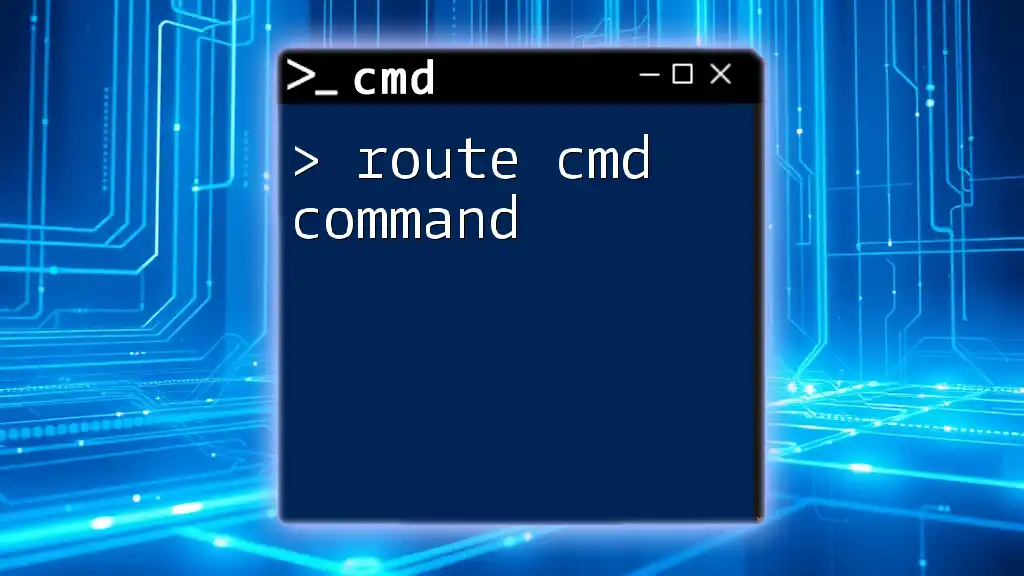
Conclusion
CMD commands are not only powerful tools for managing your Windows environment but also a fantastic way to improve your efficiency. By harnessing awesome cmd codes, you can streamline everyday tasks, troubleshoot issues, and even enjoy a bit of fun along the way.
Take the time to explore and practice these commands, and remain curious—there's always more to discover in the world of Command Prompt.
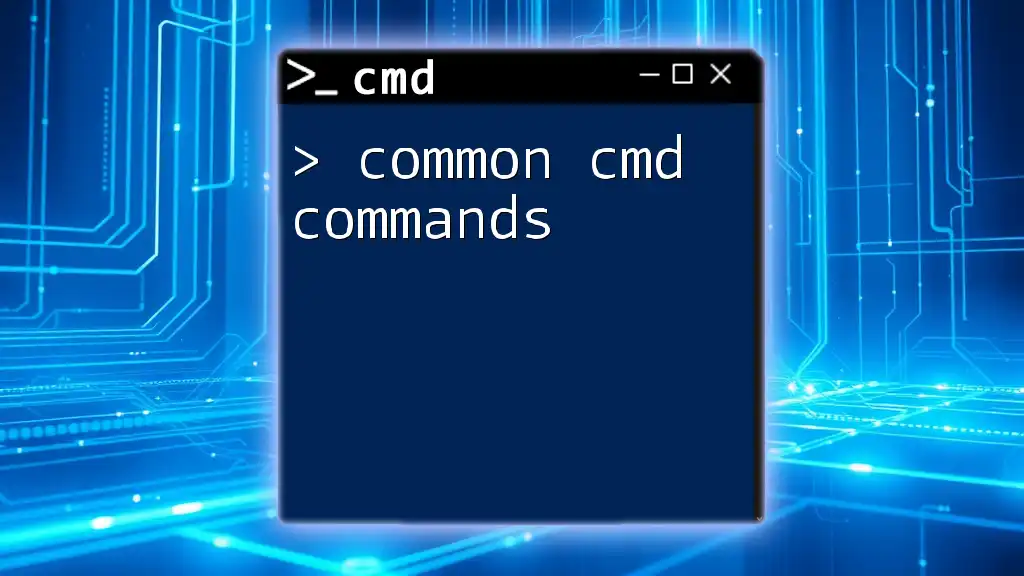
Additional Resources
To further enhance your CMD knowledge, refer to CMD reference guides online or seek out courses focused on scripting and command line proficiency. Engage with communities on forums or social media, where CMD enthusiasts gather to share insights and tips.
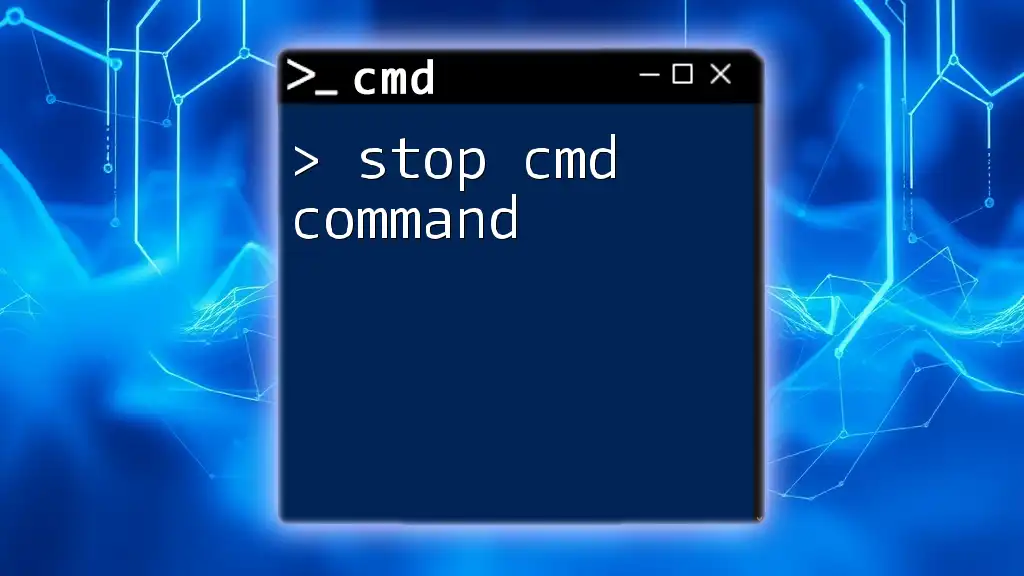
FAQs about CMD Commands
Common Questions about CMD
What is the difference between CMD and PowerShell?
While both are command-line interfaces, PowerShell is more powerful and designed for automation and configuration management, while CMD focuses on simpler command execution.
How do I get help with CMD commands?
Simply type `command /?`, replacing “command” with the specific command you need help with, to view syntax and options.
Where can I practice using CMD commands safely?
You can create a test environment using virtual machines or your own computer, ensuring you're familiar with commands without risking important data.







